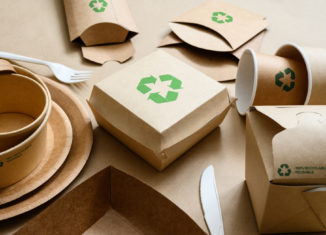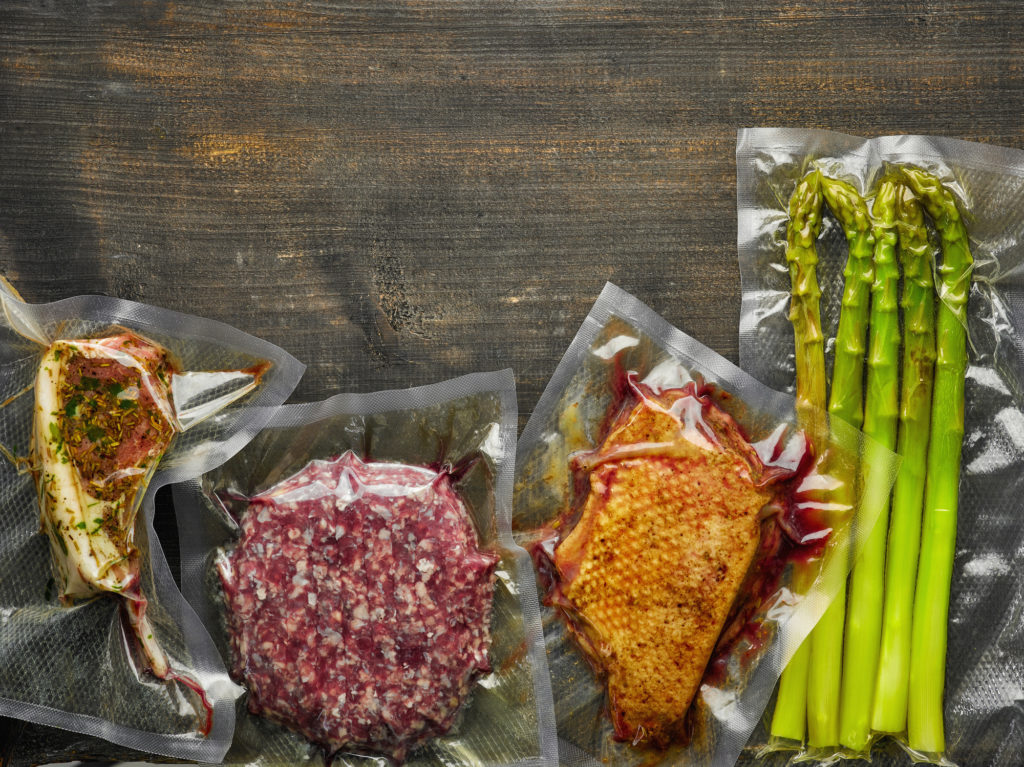
Recent years have witnessed a surge in innovative packaging solutions driven by consumer demand for convenience, eco-conscious materials, and enhanced product quality. These underscore a growing awareness of environmental impacts and health concerns.
As such, exploring the latest innovations in food packaging offers a window into the future of the food industry, where functionality, sustainability, and consumer appeal intersect. This article delves into ten notable advancements that are redefining food packaging, discussing their impact on the market and potential implications for consumers and the environment.

- Edible Packaging
Edible packaging is revolutionizing the food industry by offering a waste-free alternative to traditional packaging materials.
These edible solutions are made from natural and biodegradable ingredients like seaweed, starch, and protein and are designed to be consumed along with the food product, eliminating packaging waste.
This innovative approach adds a novel dimension to the eating experience, with possibilities for flavor and texture enhancements. The applications of edible packaging are varied, from protective coatings for fruits to snack wrappers and beverage capsules.
Edible packaging aligns with the zero-waste movement and opens new doors for creative food presentation, making it a trend to watch in the coming years.
- Smart Packaging
Smart packaging technology is a game-changer, integrating functionalities that go beyond conventional packaging roles. Equipped with sensors, QR codes, or RFID tags, smart packaging offers consumers valuable insights into product quality, freshness, and authenticity.
This technology is instrumental in preventing food spoilage and ensuring food safety by providing real-time information about temperature changes, exposure to air, or other factors that might affect the product’s condition.
Moreover, smart packaging is enhancing consumer engagement. By scanning a QR code, customers can access a wealth of information, including product origin, nutritional content, and even recipes. This interactive aspect not only educates consumers but also fosters brand loyalty by creating a more immersive product experience.
- Biodegradable Plastics
The development of biodegradable plastics marks a significant stride in reducing the environmental impact of food packaging.
Unlike traditional plastics, which take centuries to decompose, biodegradable plastics are designed to break down quickly and safely under specific conditions. These materials are made from renewable resources like cornstarch, sugarcane, or cellulose and offer a sustainable alternative to petroleum-based plastics.
Biodegradable plastics are particularly beneficial in single-use applications, such as produce bags, beverage bottles, and takeaway containers. Their adoption can significantly decrease plastic waste in landfills and oceans, aligning with global efforts to combat plastic pollution.
- Nanotechnology In Packaging
Nanotechnology in food packaging introduces microscopic elements that enhance packaging properties. Nanoparticles can be added to packaging materials to improve barrier properties against moisture, gases, and UV light, thereby extending the shelf life of food products.
This technology also enables the development of antimicrobial packaging, which actively inhibits the growth of bacteria and other microorganisms, further ensuring food safety.
The versatility of nanotechnology in packaging opens up numerous possibilities for food preservation and quality maintenance. However, it also raises questions regarding safety and regulatory approval, as the long-term effects of nanoparticles on human health and the environment are still being studied.
- Active Packaging
Active packaging is an innovative approach that actively interacts with the food product to extend its shelf life and maintain quality.
These packaging solutions incorporate elements like oxygen scavengers, moisture absorbers, or ethylene absorbers, which adjust the internal atmosphere of the package to preserve freshness. This proactive approach is particularly beneficial for perishable goods like fruits, vegetables, meats, and dairy products.
By reducing spoilage, these solutions contribute to the fight against food waste, a major concern in the global food supply chain. As consumers and retailers become more aware of the economic and environmental costs of food waste, active packaging is poised to become a key tool in ensuring food sustainability and security.
- Water-Soluble Packaging
Water-soluble packaging represents a novel approach to addressing plastic waste issues. Made from materials like polyvinyl alcohol (PVOH), these packaging solutions dissolve in water, leaving no trace behind.
Ideal for single-use applications such as detergent pods, water-soluble packaging offers a practical and environmentally friendly alternative to traditional plastics. Water-soluble packaging eliminates the need for consumers to handle or dispose of the packaging, reducing the risk of contamination and simplifying the user experience.
- Compostable Packaging
Compostable packaging is gaining traction as an environmentally friendly solution that goes a step beyond traditional recyclable materials.
Because they are made from plant-based materials like cornstarch, sugarcane, and mushroom roots, compostable packaging breaks down into natural compounds that enrich the soil. This type of packaging is ideal for food products, as it aligns with the organic and natural ethos of sustainable food consumption.
By turning packaging waste into compost, these materials contribute to a circular economy, where waste is minimized and resources are continuously reused. While the availability and cost of compostable packaging remain challenges, its potential for positive environmental impact makes it a key player in the future of food packaging.
- Vacuum Skin Packaging
Vacuum skin packaging is a technique that tightly seals food products against a plastic film, closely contouring the product’s shape. This method not only enhances the visual appeal of the product but also significantly extends shelf life by reducing oxygen exposure.
Vacuum skin packaging is particularly popular for meats and seafood, as it preserves freshness, color, and texture, making it an attractive option for consumers.
The effectiveness of vacuum skin packaging in reducing food spoilage has substantial implications for both retailers and consumers. By extending the sell-by and use-by dates of perishable products, this packaging method minimizes waste and maximizes efficiency in the food supply chain.
- Paper-based Packaging
In a shift towards sustainability, paper-based packaging is making a comeback, offering an eco-friendly alternative to plastic. Innovations in paper packaging have led to the development of more durable, water-resistant, and versatile paper materials suitable for a wide range of food products.
From snack wrappers to take-out containers, paper-based packaging is increasingly being adopted for its recyclability and renewable nature. With advancements in technology and design, modern paper packaging solutions are as functional as they are environmentally responsible. As consumers and brands alike seek greener packaging options, paper-based solutions are set to play a pivotal role in shaping the future of food packaging.
Conclusion
The innovations in food packaging highlighted in this article represent a transformative shift in the industry, driven by technological advancements, environmental consciousness, and consumer demands.
From edible and smart packaging to sustainable materials like biodegradable plastics and paper, these developments are not just about packaging food but also about addressing broader issues like waste reduction, food safety, and resource efficiency. As these innovations continue to evolve and gain traction, they hold the promise of a more sustainable, efficient, and consumer-friendly future in food packaging.
